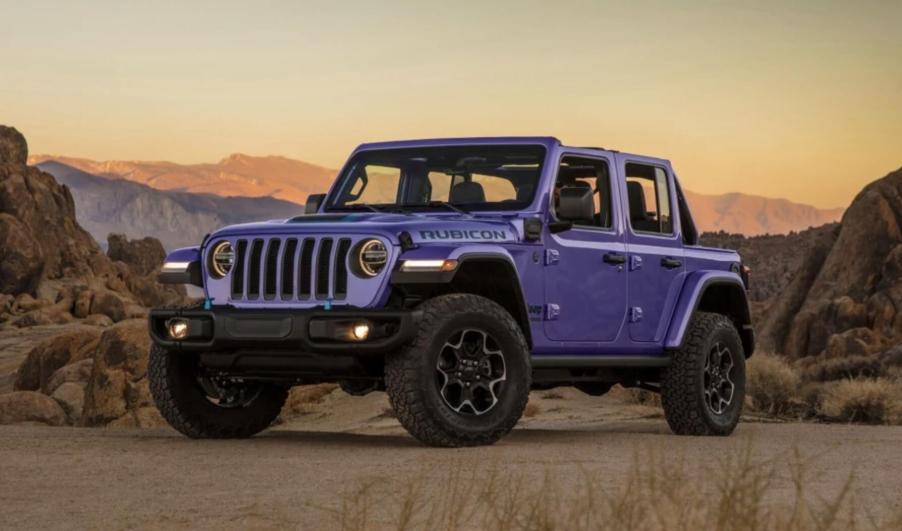
Is the Wrangler a Sell Out or Is Jeep Just Smart?
The Jeep Wrangler is a classic, rugged SUV. With solid axles front and rear, four-wheel drive, and its trademark grille, the Wrangler is as capable as it is recognizable. And as the sporty utility segment grows in popularity, the Wrangler gradually changes, trading some of its spartan attitude for a more civilized demeanor.
But is that positive or negative? Let’s look at the evolution of the Jeep Wrangler and whether it takes away from its core purpose.

Jeep Wrangler: utilitarian off-roader to borderline luxury SUV
Jeep introduced the Wrangler YJ in 1986. Featuring a basic interior, live axles, and a removable top, the original Wrangler was pure utility with a dose of fun. Inline-four and inline-six engines provided power, with a manual transfer case switching between 2WD and 4WD modes. And drivers could opt for a 5-speed manual or a 3-speed automatic.
Riding in a Wrangler was an adventure in itself. Optimized for the trails with little attention paid to everyday dynamics, the YJ was loud, rough, and inefficient. But that’s what made it a Wrangler.
Over the ensuing decades, Jeep introduced a series of updated Wranglers, beginning with the TJ in 1996. The JK followed in 2006, and the JL arrived in 2017. Each new generation brought additional refinement while holding onto the model’s storied off-road ability.
But today, some JL Wrangler trims—while still using solid axle suspension, the classic seven-slot grille, and a removable top—cross into luxury SUV territory with their modern amenities. Infotainment systems, multi-power seats, and complex HVAC controls crowd the interior with buttons and touchscreens, taking away from the Wrangler’s simple character.
Recently, ABC News covered the SUV’s move toward luxury amenities and higher-budget consumers. They highlighted the 2024 Jeep Wrangler’s comfort and convenience, with a 12.3-inch touchscreen and 12-way power-adjustable front seats. Also mentioned was the Wrangler’s rising price, with a 4-door Sport model starting at $36,990 and a top-of-the-line Rubicon 392 costing $82,495.
Even then, drivers can’t get enough of this classic SUV. Last February, Jeep introduced 20th-anniversary special editions of the Wrangler 4xe and the Wrangler Rubicon 392. The 4xe carried an MSRP of $69,585 and the Rubicon 395 was $90,895. Buyers could also opt for a Level II upfit by American Expeditionary Vehicles (AEV) for an extra $20,000.
In less than 24 hours, the 20th-anniversary Wrangler 392s were sold out.
The new Jeep Wrangler: too much luxury or smart business decision?
Some Wrangler fans might dislike its shift toward creature comforts and higher prices. After all, the Wrangler’s one of the original go-anywhere SUVs, with a rugged personality that was anything but luxurious.
But as the Wrangler grows in popularity, and because so few venture off-road, its interior changes are positive for many. Comfort is an essential aspect of everyday driving, and softening up the Wrangler’s rough edges makes it a more appealing choice for regular consumers. Even then, those who seek a more basic layout can still purchase one without all the bells and whistles.
Business-wise, it’s an excellent strategy on Jeep’s part. Higher prices translate into increased profits and with buyers willing to pay upward of $100,000 for a Wrangler, luxury-oriented Jeeps just make sense.
Still, the brand holds onto its capable, fun image and the Wrangler continues to have excellent off-road ability. And the seven-slot grille shows its core design remains.



